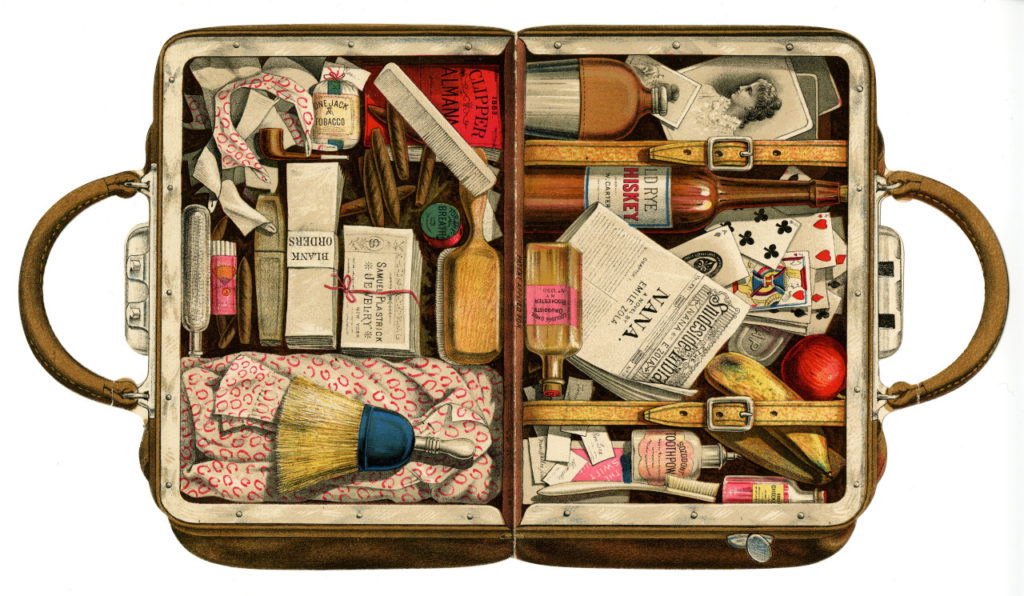- by Vijay Matheswaran
The first time I left home, I carried with me one VIP suitcase, an air bag and a packet of Good Day biscuits. In my luggage were neatly stacked layers of underwear, pyjamas, bed linen and khaki shirts. Collars, waistbands and hems were marked with my name. My father’s brusque scrawl also graced the suitcase: M Vijay, The Lawrence School, Lovedale. Apart from this, I carried with me a degree of fear and excitement, and the heavier baggage of grief at leaving. Photographs and keepsakes did not make the cut; the only vestiges of home I recall packing were a favourite book or a box of crayons.
The things I packed were dictated neither by my attachment nor endearment to them, but by an expansive list provided by the school. Deemed necessary were toothbrush and toothpaste, nail clippers, cold cream, vaseline, soap, uniforms and a bathrobe. Food (otherwise termed tuck) of any kind was out of the question, as were toys. Books were encouraged; so were musical instruments and board games.
***
Over the years, I’ve pondered on the ritual of leaving home. For most part, what we carry is determined by our reason for leaving. There are the bare necessities: clothes and sustenance. Beyond this, one makes room for tokens and souvenirs, photographs and mementos. Then there are the intangibles, often the heaviest accoutrements. Trepidation, eagerness and excitement are not too much of a burden, but the occasional modicum of grief and responsibility can be a heavy load to bear.
Last year, I visited an exhibition called ‘Post Date: Photography and Inherited History in India’. Much of the eastern wall of the gallery was decked with translations of letters and photographs of Indian sepoys serving in France in the First World War. The letters were evocative, and often penned beautifully. A few offered glimpses of when and how the sepoys had left home. In older, slower times like those, one may have packed earth in a jar, or perhaps pressed a leaf or flower from the garden between the pages of a book. They were fragments of home, carefully stowed away and carried to distant lands. Such accounts have never ceased to impress me.
As a child, I never found the need to carry these fragments of home with me on journeys. Subsequent trips to school began at a teeming platform in Chennai Central, waiting for the Nilgiri Express. What I carried with me on ensuing departures varied from that first trip: the list was disregarded, experience taking its place. Smuggling in food was no longer inconceivable, but a necessity. Books continued to be a staple and, as I grew older, an occasional photograph was slipped in.
I left India in 2013, first for Sweden, and then the United States. Unlike the first time thirteen years ago, I carried with me several pieces of home. Photographs of family and a notebook from my sister. A Rubik’s cube from a first girlfriend, a bottle of cologne from a mate. Packets of loose leaf tea and a miniature of the Indian flag. Why was it that as I grew older and ventured farther, I felt the need to carry fragments of home? Did I need to convince myself of my love for family, friends and home? Rather, these items kept me tethered to a land that I had, physically, left behind. They were my keys to the past, a path back to the home I had departed. In a distant land, they were the roots I had struck at home.
I will leave home again in the years to come, probably not for the last time. What will I carry then?
Vijay Matheswaran is currently a graduate student at Wichita State University. He has previously been published at Everyday Fiction and and shortlisted for the Open Road Review Short Story Prize. He hopes that one day he will write a book worthy of his idols, Jhumpa Lahiri and Rohinton Mistry.
